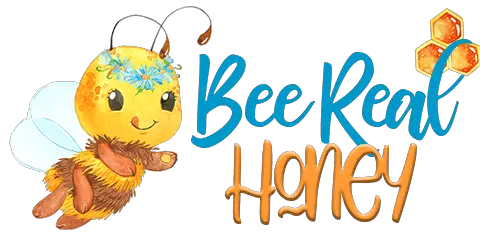*This post may have affiliate links, which means I may receive commissions if you choose to purchase through links I provide (at no extra cost to you). As an Amazon Associate I earn from qualifying purchases. Please read my disclaimer for additional details..
Perennial plants can be defined as hardy plant species that can thrive for many growing seasons. Simply put, perennial plants will regrow their dead top portions in the spring after these portions die in the winter.
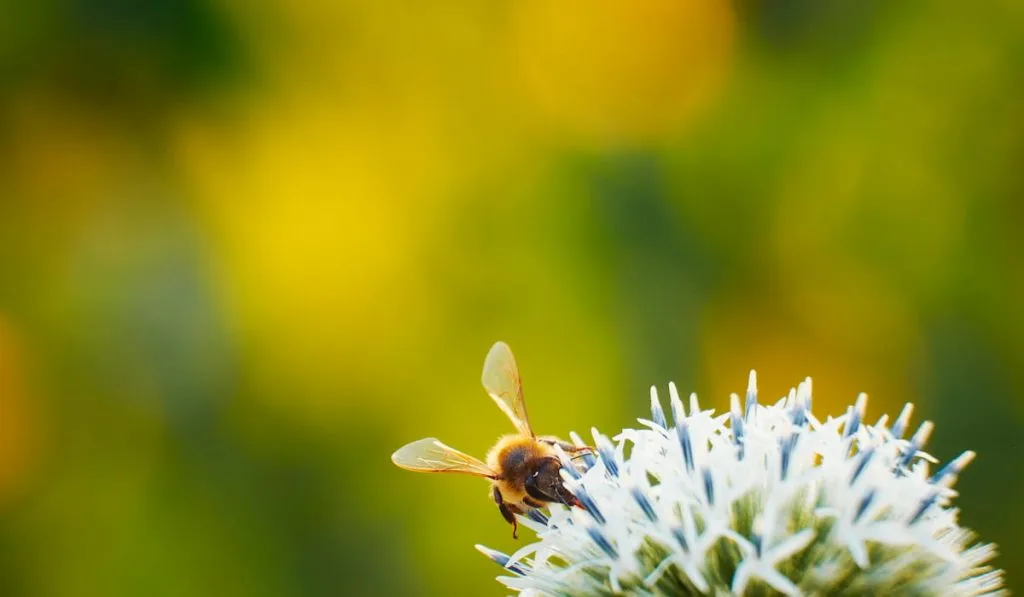
Unlike annual plants that complete their life cycle in one season, perennials can live three years or longer, depending on their environment and condition. These plants attract many pollinators including bees.
Bees are one of the essential pollinators that help in facilitating a faster pollination process. But which perennial species are bee-friendly?
In this article, we will explore the 15 best perennial plants for bees.
Table of Contents
1. Peonies (Paeonia lactiflora)
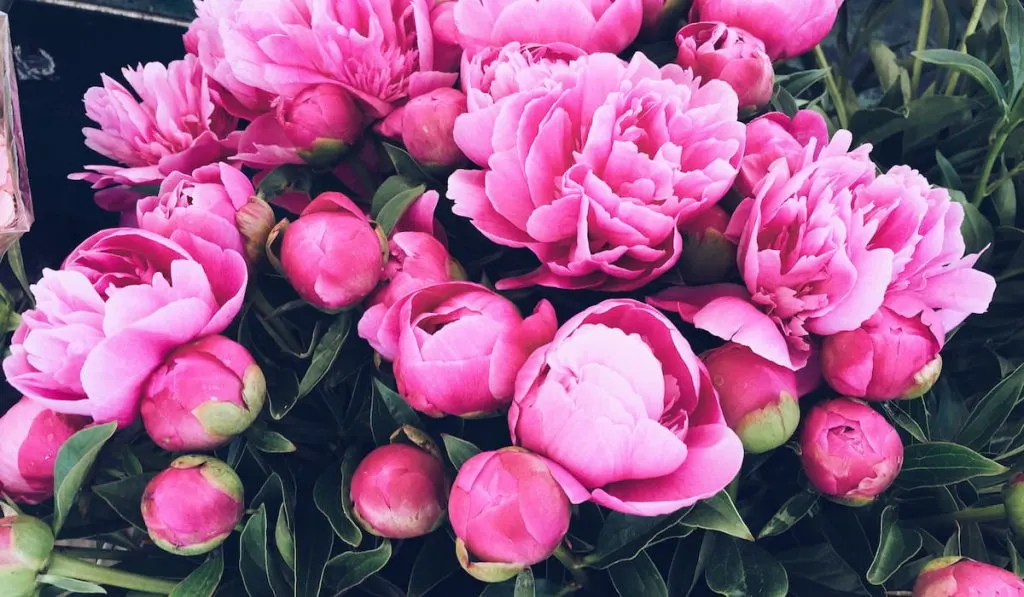
Peonies are native to regions like Western North America, Asia, and Europe. These beautiful perennial plants bloom prolifically from spring to summer. They grow 4-7 feet tall with a spread 4-5 feet wide.
Peonies produce large, fluffy flowers that come in various shapes and forms with flowers in pink, purple, yellow, red, and white.
There are three types of peonies: herbaceous peonies, tree peonies, and intersectional peonies.
Their flowers can be divided into six types: single, double, semi-double, bomb, anemone, and Japanese.
Peonies perform best in well-drained soils under full sun. Most peony flowers produce fragrant scents that attract pollinators like bees, butterflies, and hummingbirds.
2. Lavender (Lavandula angustifolia)
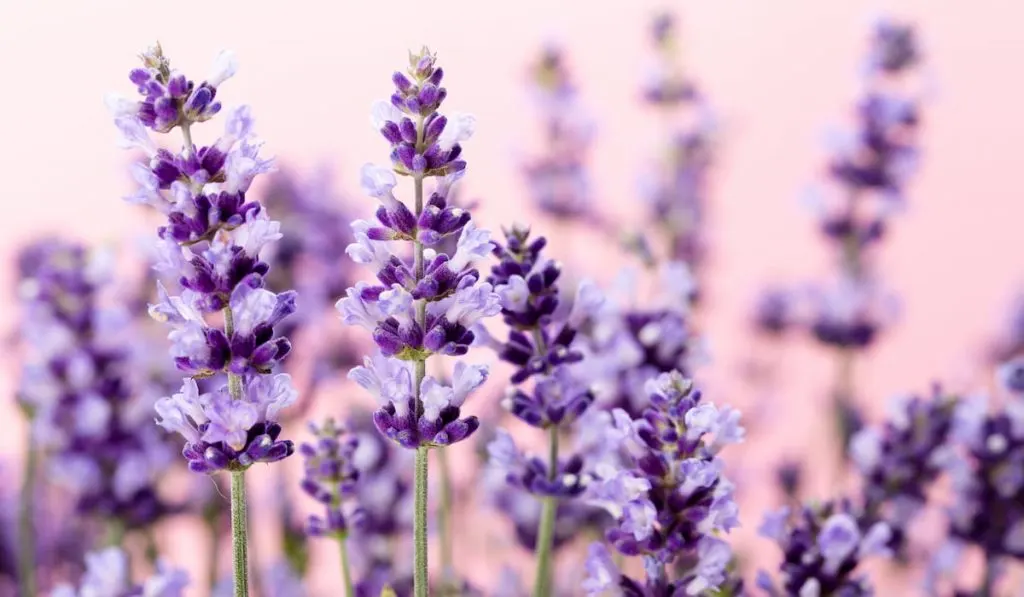
Lavenders are native to the Old Worlds but can also be found widely in other regions including Asia, Europe, northern and eastern Africa, and the Mediterranean.
Aside from being commercially produced as a fragrance, these plants can also be used for medicinal purposes to treat insomnia, skin problems, promote hair growth, and more.
Lavenders grow 2-3 inches tall with gray to green leaves that thrive in different climates.
These perennial plants typically produce clusters of tiny flowers that come in different colors ranging from deep purple-blue, lavender, white, to pink.
Lavenders are easy to plant and care for. They need well-drained soils and full sun. Watering can only be done once or twice a week to prevent the soils from becoming soggy.
Due to their sweet smell, lavenders attract bees, butterflies, and other pollinators.
3. Coneflower (Echinacea angustifolia)

Coneflowers are native to the United States, specifically in regions like Georgia, Iowa, and Ohio south to Louisiana.
These perennial plants grow 2-4 feet tall with a spread of 15 inches wide. The colors of their flowers vary from purple, yellow, pink, white, orange, green, to red. They bloom heavily in the summer and fall.
Being low-maintenance plants, all coneflowers need are well-drained soils and full sun. Even without frequent watering, they can survive in a low-moisture environment for quite a long time.
Planting cornflowers in your backyard will definitely attract pollinators like bees, butterflies, hummingbirds, and goldfinches that love the seeds and pollen grains from these plants.
4. Cirsium (Cirsium arvense)

Also known as plume thistles or creeping thistles, these perennial plants are native to Eurasia and northern Africa with several varieties hailing from North America.
Cirsium are tall, erect, and leafless plants with deep crimson flowers that spread about 1 inch wide. When they grow in clumps, these plants reach up to 4 feet tall with a width of 2 feet.
Cirsium thrive in medium-wet and well-drained soils with partial or full sun. They are easy to grow and typically bloom from mid-summer to late summer.
They produce tiny fruits with white to light brown pappus that measure 0.01-0.04 inches. Most importantly, bees and hummingbirds are attracted to Cirsium because of their pollen grains and seeds.
5. Phlox (Phlox paniculata)

Phlox are upright, perennial plants that can be widely found in North America. These beautiful plants produce bushy, star-shaped flowers in the summer and spring. Their flowers come in white, blue, pink, purple, and red.
Phlox grow 6 inches to 4 feet tall, depending on their varieties.
Growing phlox will require a little more work compared to other perennial plants. They perform best in moist, well-drained soils that are rich in organic materials.
They need frequent watering because any lack of moisture will inhibit their growth but once they have fully grown, phlox attract pollinators like bees and butterflies that love the fragrant smell of their flowers.
6. Common Boneset (Eupatorium perfoliatum)

Common bonesets are native to the wetlands of North America and belong to the Aster family.
These tall unbranched perennial plants grow 2-4 feet tall and spread 3-4 feet wide. Their hairy, large-clumping flowers measure around a quarter-inch wide and consist of 15 disk florets. They typically bloom from late summer to early fall.
The best environment to grow common bonesets is with well-drained soils and under full sun. They prefer wet to moist environments, so frequent watering is essential to retain the moisture in the soils.
Due to their nectar and fragrant flowers, common bonesets attract different kinds of insects including bees, butterflies, wasps, and many more.
7. Echinops (Echinops sphaerocephalus)
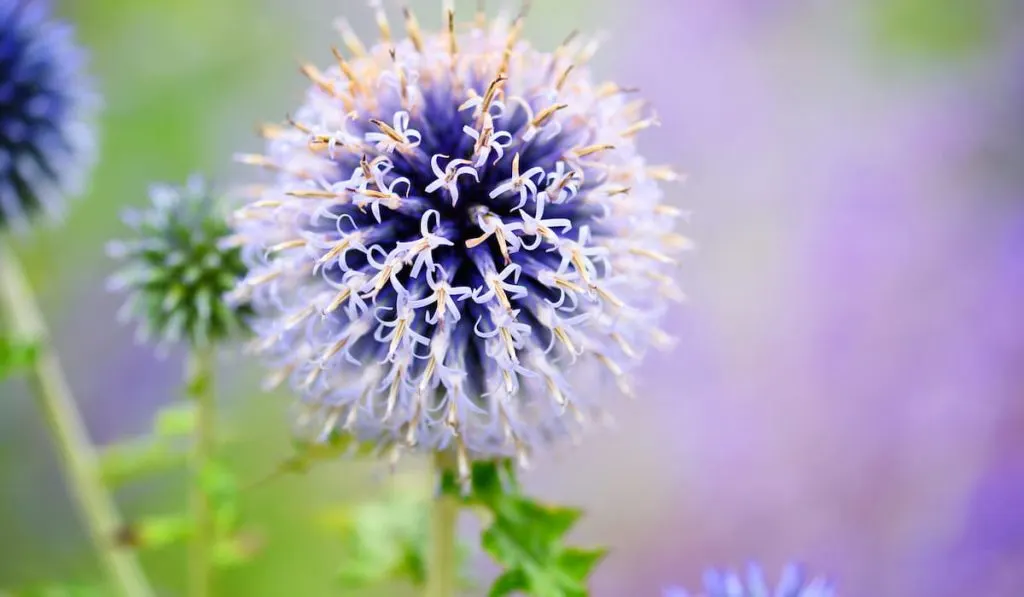
Also known as the globe thistles, Echinops are unique perennial plants that are native to Europe, Mediterranean regions, south to the mountains of tropical Africa, and east to central Asia.
They can be recognized as blue pom pom-like flowers that come in different shades of blue like ‘Taplow Blue’, ‘Veitch’s blue’, and ‘Arctic Glow’. They grow 2-5 feet tall and spread 1-3 feet wide.
Echinops are drought-tolerant but they perform best in moist, well-drained soils under full sun. Being low-maintenance species, no deadheading is required to promote the growth of their flowers.
These plants offer nectars and pollen grains that attract pollinators like bees and butterflies.
8. Sedum (Sedum)
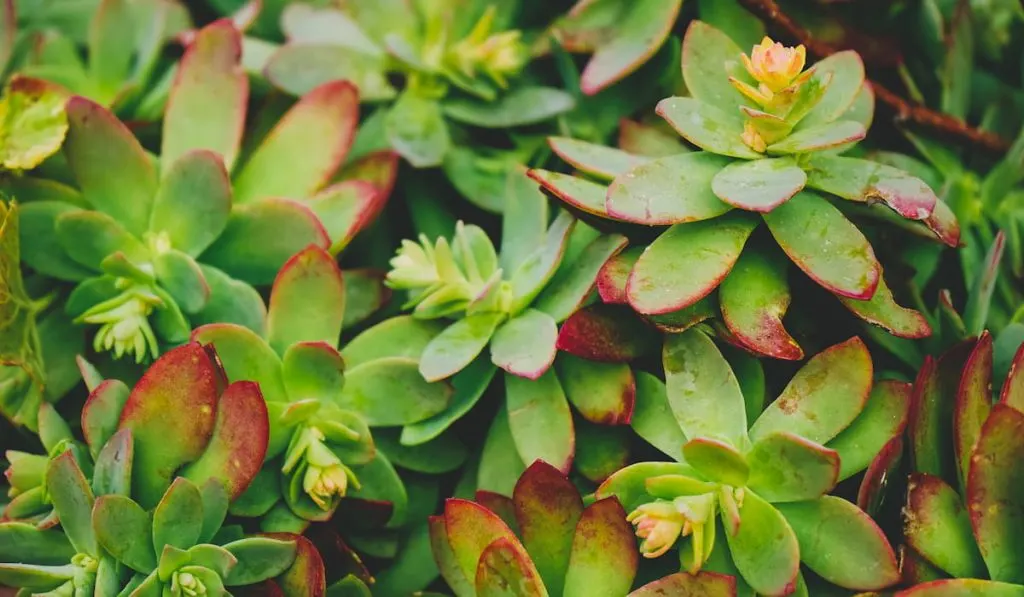
Also known as stonecrops, Sedums are succulent, perennial plants that can be widely found in Northern Hemisphere and southern hemisphere in South America and Africa.
They can be recognized by their thick leaves, fleshy stems, and clusters of star-shaped flowers. These plants grow n from 3 inches tp 6 feet tall with a maximum spread of 23 inches.
Sedums can be categorized into two groups: low-growing and upright.
Their flowers come in red, pink, yellow, and white. These plants are easy to grow because they perform best in well-drained soils under full sun.
On the other hand, low-growing sedums can thrive under the partial sun but upright sedums need full sun to grow healthily.
Pollinators like bees and butterflies are attracted to Sedums due to their flowerheads that are rich in nectar and pollen grains.
9. Persicaria (Persicaria amplexicaulis)
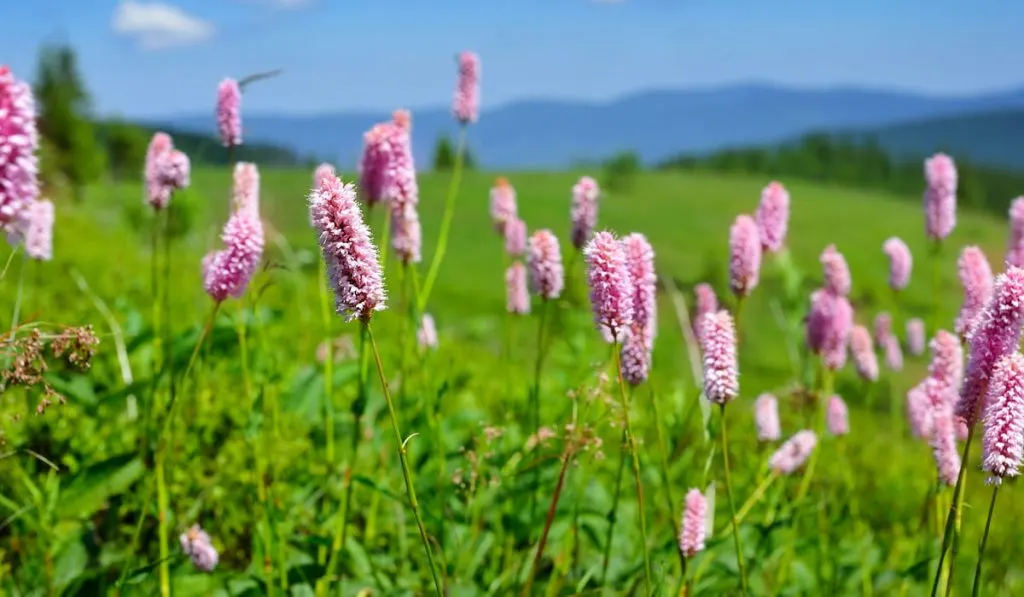
Persicarias are also known by their other names such as knotweeds, smartweeds, and mountain fleece.
These herbaceous, perennial plants can be found in wet regions like along ponds, streams, and meadows. They grow 3-4 feet tall and spread 35-47 inches wide. From early summer to fall, Persicarias bloom prolifically.
Their bottle-brush-like flowers typically come in red, white, pink, and purple.
Persicarias perform best in moist and well-drained soils under partial or full sun. They bear small fruits that come in sphere or disc shapes. These plants are magnets to pollinators like bees and butterflies that are attracted to them for their pollen grains.
10. Milkweed (Asclepias spp.)
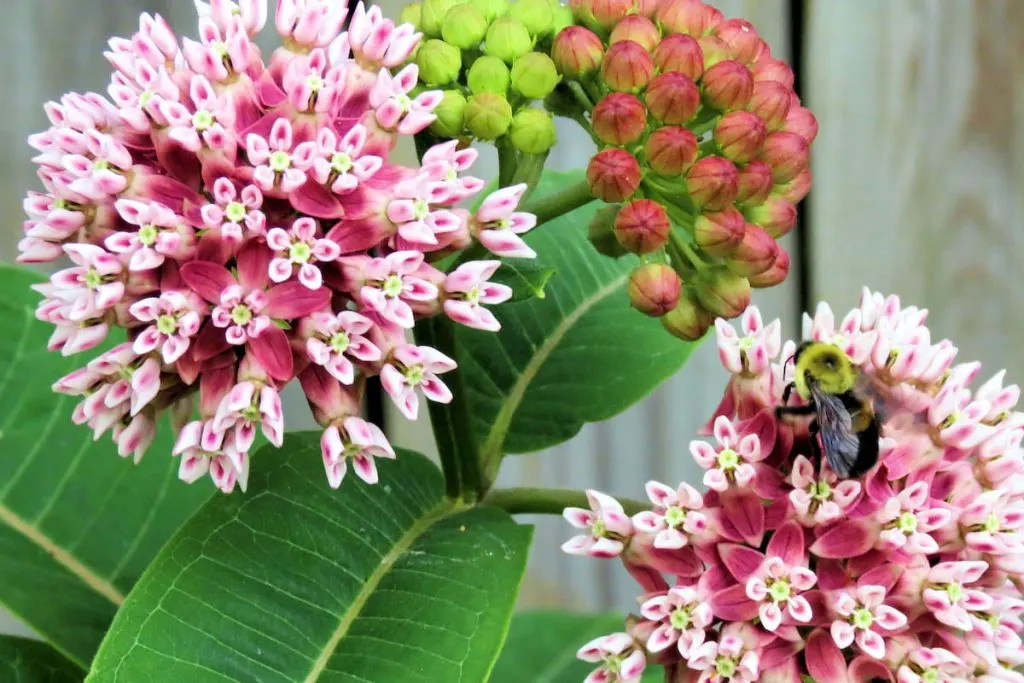
Milkweeds are herbaceous, perennials plants that are native to the United States and Canada. They received their name from the sticky milk sap that oozes from their damaged leaves.
These plants typically grow 3-8 feet tall and spread 1-3 feet wide. There are five most popular milkweed varieties: swamp milkweed, tropical milkweed, common milkweed, whorled milkweed, and butterfly weed.
Aside from their milky sap and seed-bearing fruits, milkweeds can be recognized by their clusters of five-petaled flowers. These flowers come in white, pink, orange, and purple.
Growing milkweeds is fairly easy. They thrive in poor soils under full sun with medium to little moisture. These plants are one of the food sources for pollinators like bees and monarch butterflies.
11. Cardinal Flower (Lobelia cardinalis)
Cardinal flowers are native to Mexico, Central America to northern Colombia, and certain regions in the United States like Michigan, Indiana, Missouri, Ohio, Wisconsin, and Iowa.
These perennial plants can be recognized by their crimson red flowers that measure around 8 inches in length. Cardinal flowers typically grow 2-4 feet tall and spread 1-2 feet wide.
Cardinal flowers perform best in medium to wet, well-drained soils under partial or full sun.
In a drought season, frequent watering is required to maintain an optimum moisture level in the soils. Being a hardy species, they are resistant to diseases and pests like aphids and mealybugs.
In the summer and fall, these flowers bloom heavily before pollinators like bees, butterflies, and hummingbirds come to extract their nectars and pollen grains.
12. Bee Balm (Monarda didyma)

Like their name, bee balms are one of the magnets for pollinators like bees, butterflies, and hummingbirds.
Aside from their nectar and pollen grains, bee balms are a beautiful perennial plant that can be grown as ornamental plants. They are native to North America and can be found blooming prolifically in the summer.
These plants grow 2-4 feet tall and spread 2-3 feet wide.
Bee balms produce daisy-like, tubular petal flowers that come in purple, red, and pink. They thrive in moist, well-drained soils under full sun.
Bee balms should be planted in areas with good air circulation to prevent any presence of powdery mildew on the leaves.
13. Centaurea (Centaura L.)
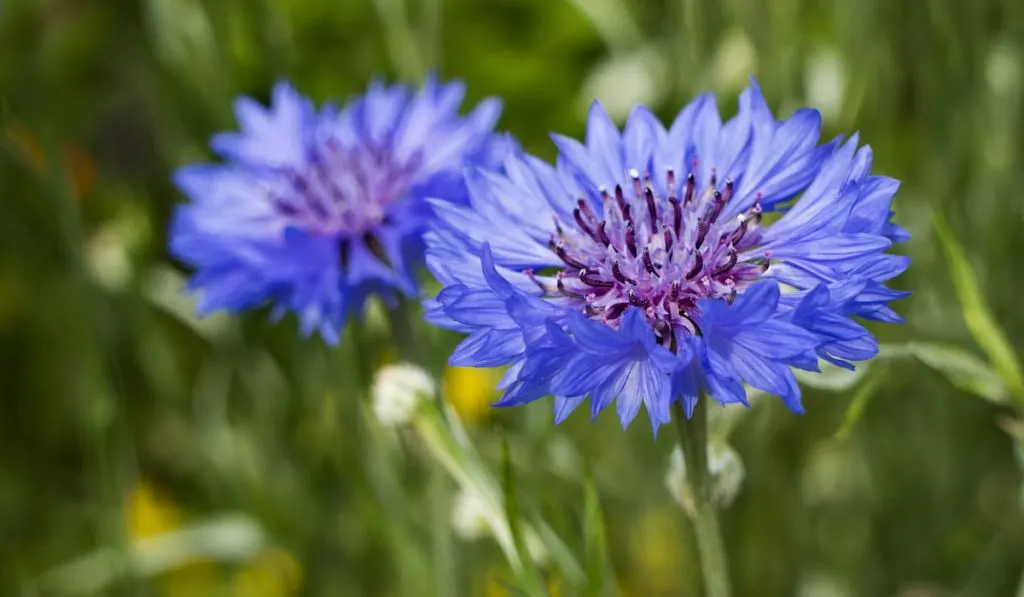
Also known as knapweeds, these perennial plants can only be found in certain regions in the world, specifically in the Eastern Hemisphere, the Middle East, and the western United States.
These plants typically grow 2-3 feet tall and spread 1-2 feet wide.
During their blooming period from June to September, knapweeds will produce spherical black or brown flowerheads with top inflorescence petals that come in purple, white, blue, and pink.
Knapweeds perform best in moist and well-drained soils under full sun. Some knapweed varieties can thrive in drought conditions, but only for a short period of time.
In the wild, these thistle-like plants can be found in grasslands, meadows, lawns, and cliff-tops.
Knapweeds are magnets for insect pollinators like bees and butterflies due to their flowerheads that are rich in nectar. Plus, the seeds are also a source of food for these insects.
14. Helenium (Helenium autumnale)
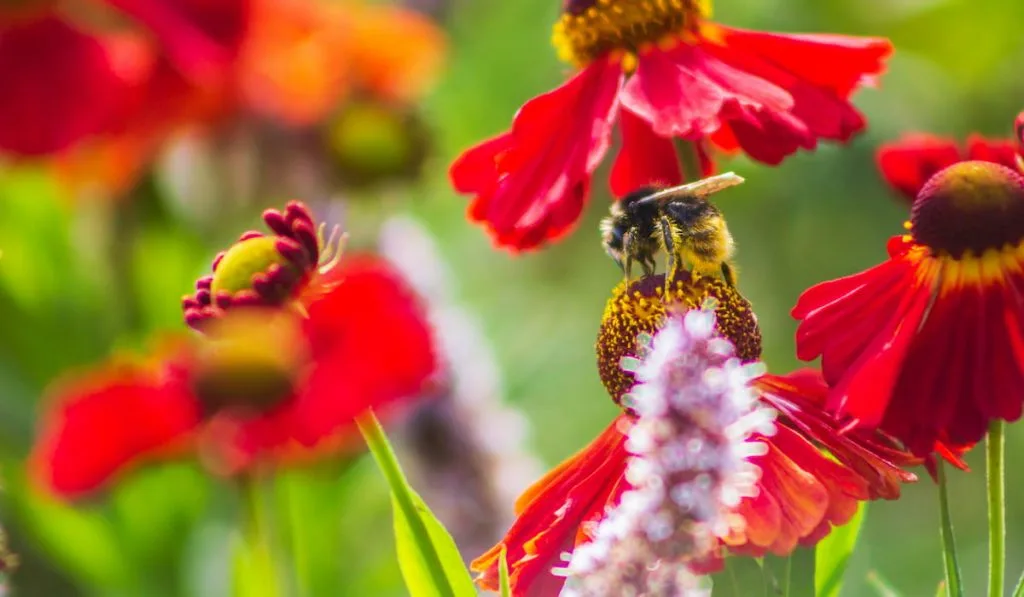
Heleniums are perennial plants that bloom prolifically from early summer to early fall. Also known as sneezeweeds, they are native to North America and Central America.
These plants typically grow 3-5 feet tall and spread 1-2 feet wide. Their daisy-like flowers come in yellow, orange, and red.
Growing Heleniums is fairly easy. They need moist, slightly acidic, and well-drained soils, and enough exposure to full sun.
Although frequent watering is prohibited to prevent excess moisture, this is not applicable during drought or extremely hot seasons. They still need enough water to prevent dehydration and dry soils.
Being a great pollinator plant, Heleniums attract bees and butterflies.
15. Black-eyed Susan (Rudbeckia hirta)
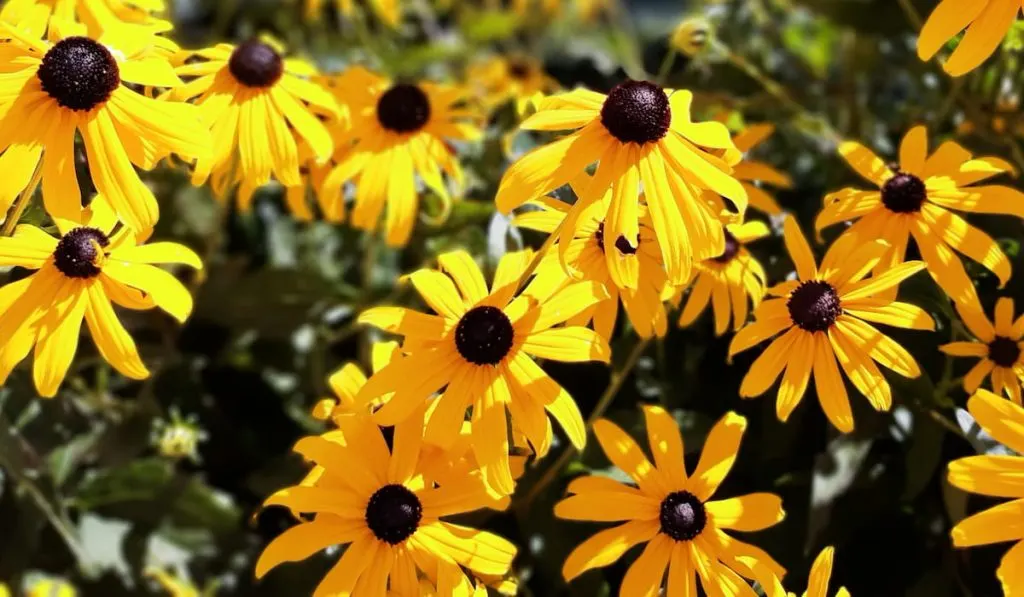
Black-eyed Susans are native to North America and typically bloom from June to October. These bright-colored perennial plants can be recognized by their upright, hairy stems with daisy-like flowerheads.
They grow up to 10 feet tall and spread 2-9 inches. Their single, semi-double, or double-petaled flowers usually come in red, yellow, and orange.
Although Black-eyed Susans can thrive in poor soils, they perform best in moist, well-drained soils under full sun.
However, it is best to not overwater the plants to prevent soggy soils. Unlike another perennial special, these plants also do not need any deadheading to promote their growth.
Most importantly, insect pollinators like bees and butterflies are attracted to Black-eyed Susans because of their nectars and pollen grains.
Final Thoughts
Whether it is for their pollen grains or nectars, perennial plants play an important role in a balanced and healthy ecosystem.
This is a mutually exclusive symbiosis; bees help in pollinating the pollen grains they get from the plants and the plants spread their seeds, growing more plants for the bees to obtain what they really need.
One cannot do without the other.
Resources
- https://www.gardendesign.com/peony/
- https://www.gardendesign.com/plants/lavender.html
- https://www.almanac.com/plant/coneflowers#
- https://www.gardenia.net/plant/cirsium-rivulare-atropurpureum-plume-thistle
- https://www.almanac.com/plant/phlox
- https://www.illinoiswildflowers.info/prairie/plantx/cm_boneset.htm
- https://www.gardenersworld.com/how-to/grow-plants/how-to-grow-echinops/
- https://www.almanac.com/plant/sedum
- https://www.gardenia.net/plant-variety/persicaria-amplexicaulis-mountain-fleece
- https://www.gardendesign.com/plants/milkweed.html
- https://www.gardenia.net/plant/lobelia-cardinalis-cardinal-flower
- https://www.almanac.com/plant/bee-balm#
- https://www.finegardening.com/genus/centaurea
- https://www.gardenia.net/plant-variety/helenium-sneezeweed
- https://www.almanac.com/plant/black-eyed-susans
